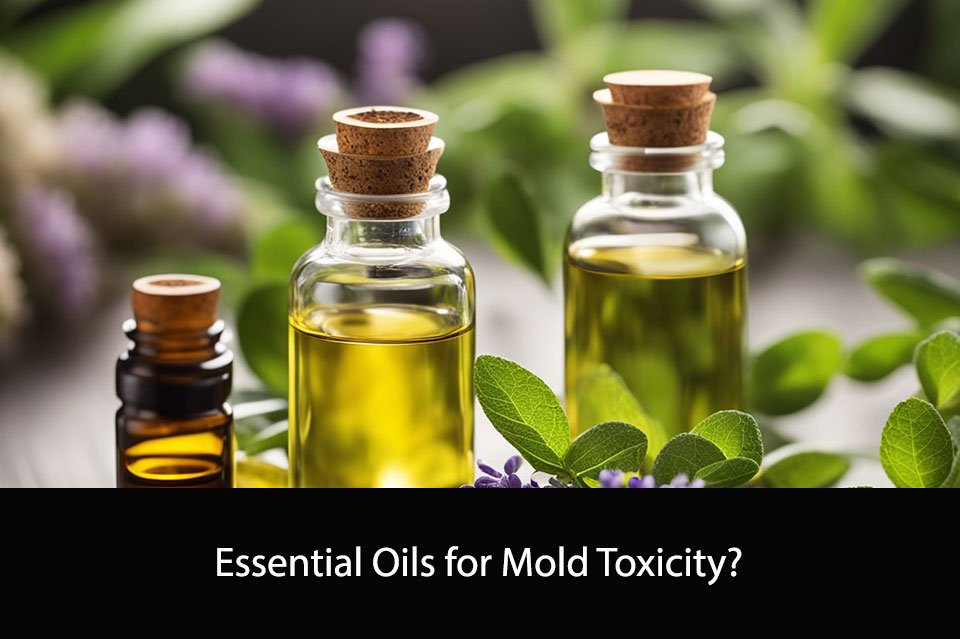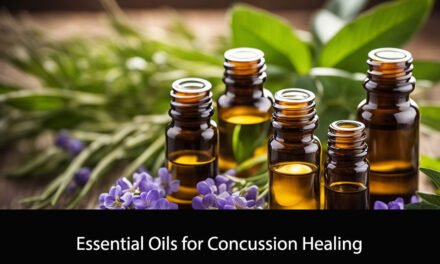Essential oils have been used for centuries to treat a variety of ailments and conditions. In recent years, essential oils have gained popularity for their potential to treat mold toxicity. Mold toxicity can occur when individuals are exposed to high levels of mold, which can cause a range of symptoms, including respiratory problems, headaches, and fatigue.
While essential oils are not a cure for mold toxicity, they may be able to help alleviate some of the symptoms associated with the condition. Essential oils such as tea tree, eucalyptus, and peppermint have been shown to have antifungal and antibacterial properties, which may help to combat mold and prevent it from spreading. Additionally, essential oils such as lavender and frankincense have been shown to have anti-inflammatory properties, which may help to reduce inflammation in the body caused by mold toxicity.
If you suspect that you may be suffering from mold toxicity, it is important to seek medical attention. Your doctor can help you determine the best course of treatment for your individual needs. However, incorporating essential oils into your treatment plan may be a natural and effective way to help manage some of the symptoms associated with mold toxicity.
Understanding Mold Toxicity
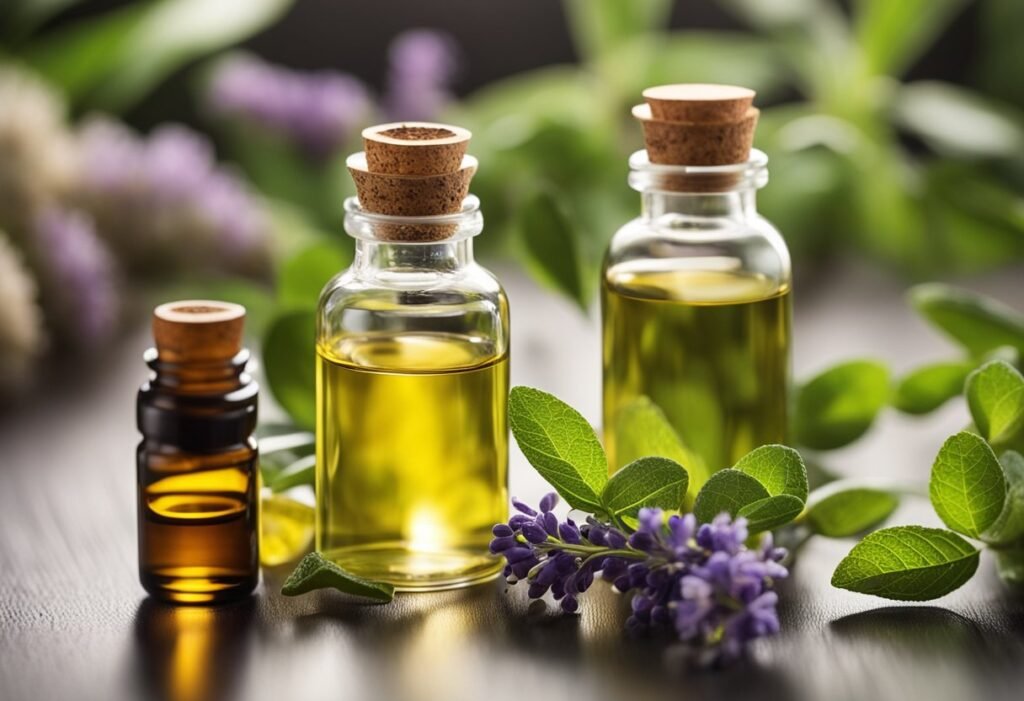
Mold is a type of fungus that grows in warm and damp environments. It can be found in various places such as bathrooms, kitchens, basements, and attics. Mold spores can cause health problems, especially if you’re exposed to them for extended periods.
Mold toxicity happens when you inhale or ingest mold spores, and your body reacts to them. The symptoms of mold toxicity can vary from person to person, depending on the type of mold and the individual’s sensitivity to it. Some common symptoms of mold toxicity include:
- Sneezing
- Coughing
- Wheezing
- Runny nose
- Itchy eyes
- Skin rash
- Headaches
- Fatigue
- Difficulty concentrating
If you suspect that you have mold toxicity, it’s essential to seek medical attention. Your doctor can perform tests to determine the type of mold and the severity of your symptoms. They may also recommend treatment options such as antihistamines, decongestants, or corticosteroids to help alleviate your symptoms.
Preventing mold growth is the best way to avoid mold toxicity. You can do this by keeping your home dry and well-ventilated, fixing any leaks or water damage promptly, and cleaning up any mold as soon as you notice it. Using essential oils, such as tea tree oil, eucalyptus oil, and clove oil, can also help inhibit mold growth.
In conclusion, mold toxicity is a serious health concern that can cause a range of symptoms. If you suspect that you have mold toxicity, seek medical attention promptly. To prevent mold growth, keep your home dry and well-ventilated, fix any leaks or water damage promptly, and use essential oils to help inhibit mold growth.
Role of Essential Oils in Detoxification

Essential oils are known for their therapeutic properties and have been used for centuries to treat various ailments. When it comes to mold toxicity, essential oils can play a crucial role in detoxification. Here are some ways in which they can help:
- Antifungal Properties: Essential oils such as tea tree, oregano, and thyme have potent antifungal properties that can help eliminate mold from the body. These oils can be used topically or inhaled to help fight off mold-related infections.
- Immune System Support: Mold toxicity can weaken the immune system, making it more susceptible to infections. Essential oils such as frankincense, lemon, and peppermint can help support the immune system and promote overall health.
- Stress Relief: Mold toxicity can be a stressful experience, and stress can further weaken the immune system. Essential oils such as lavender, chamomile, and ylang-ylang can help promote relaxation and reduce stress levels.
- Detoxification Support: Essential oils such as lemon, grapefruit, and juniper berry can help support the body’s natural detoxification processes. These oils can be used topically or ingested to help flush out toxins from the body.
Incorporating essential oils into your daily routine can help support your body’s natural detoxification processes and promote overall health. However, it’s important to note that essential oils should not be used as a substitute for medical treatment. If you suspect that you have mold toxicity, it’s important to consult with a healthcare professional for proper diagnosis and treatment.
Types of Essential Oils for Mold Toxicity
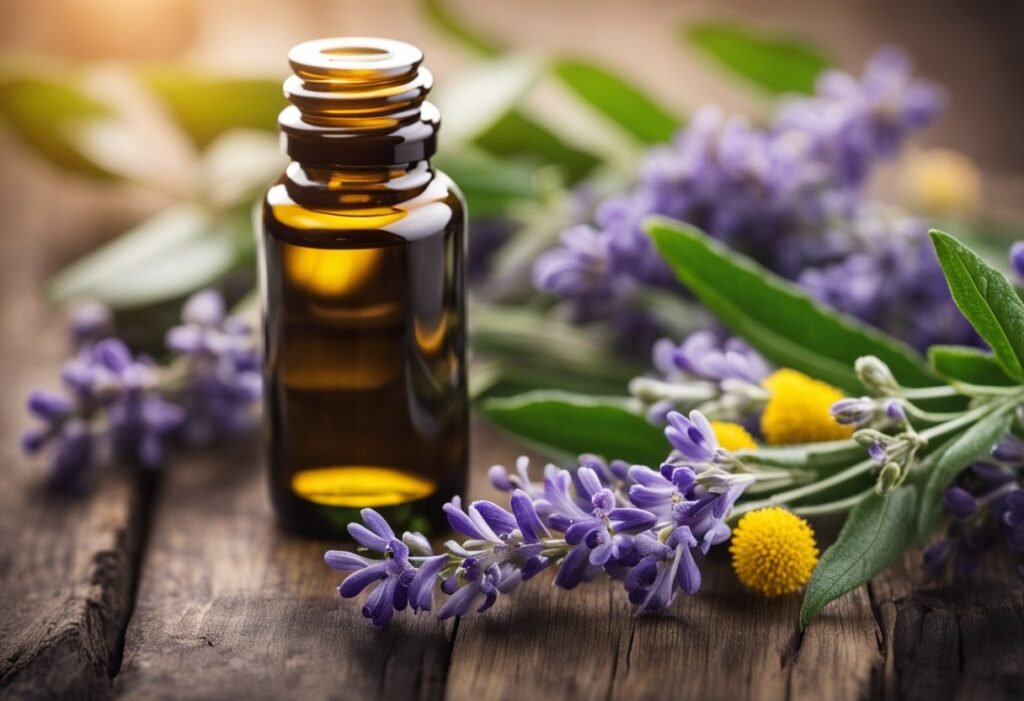
When it comes to mold toxicity, essential oils can be a natural and effective way to combat the problem. Here are a few types of essential oils that can be helpful:
Tea Tree Oil
Tea tree oil is a popular essential oil that has a variety of uses, including for mold toxicity. It has antifungal properties that can help to kill mold spores and prevent their growth. It can be used in a diffuser or mixed with water and sprayed onto surfaces.
Clove Oil
Clove oil is another essential oil that has antifungal properties. It can be effective against a variety of fungi, including those that cause mold toxicity. It can be used in a diffuser or mixed with water and sprayed onto surfaces.
Thyme Oil
Thyme oil is a powerful essential oil that has antimicrobial properties. It can be effective against a variety of bacteria and fungi, including those that cause mold toxicity. It can be used in a diffuser or mixed with water and sprayed onto surfaces.
Oregano Oil
Oregano oil is another essential oil that has antimicrobial properties. It can be effective against a variety of bacteria and fungi, including those that cause mold toxicity. It can be used in a diffuser or mixed with water and sprayed onto surfaces.
Overall, essential oils can be a helpful addition to your mold toxicity treatment plan. However, it’s important to use them safely and in conjunction with other treatments recommended by your healthcare provider.
How to Use Essential Oils for Mold Toxicity
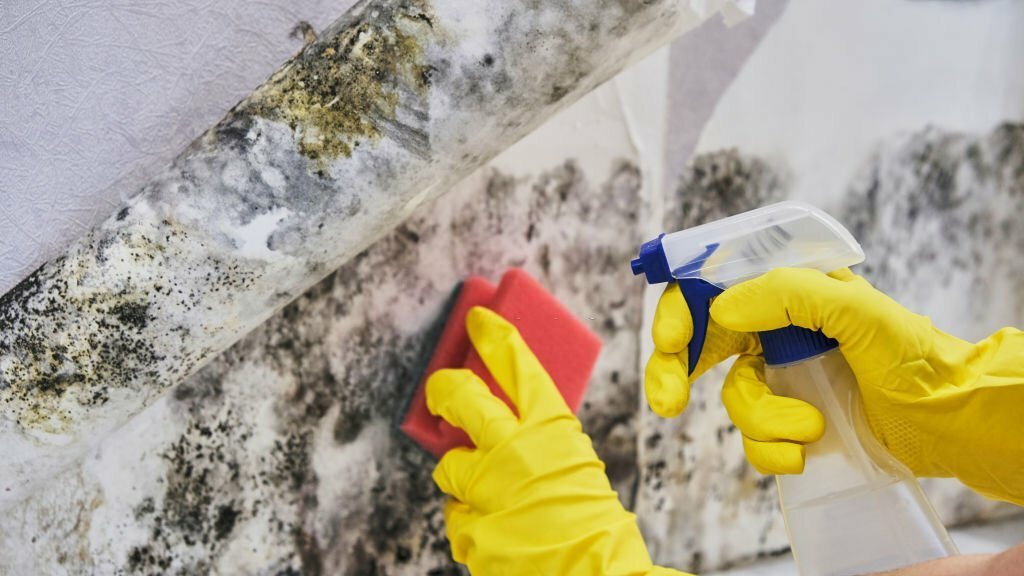
When it comes to using essential oils for mold toxicity, there are three main methods of application: topical, inhalation, and ingestion. Each method has its own benefits and risks, so it’s important to understand how to use them safely and effectively.
Topical Application
Topical application involves applying essential oils directly to the skin. This method is often used for localized mold-related symptoms, such as skin rashes or irritation. Before using essential oils topically, it’s important to dilute them with a carrier oil to avoid skin irritation. Some carrier oils you can use include coconut oil, jojoba oil, and almond oil.
To apply essential oils topically, mix a few drops of the oil with a carrier oil and apply it to the affected area. You can also add the oil to a warm bath or use it in a massage oil blend.
Inhalation
Inhalation involves breathing in essential oils through the nose or mouth. This method is often used for respiratory symptoms related to mold toxicity, such as coughing or wheezing. There are several ways to inhale essential oils, including:
- Diffusers: These devices disperse essential oils into the air, allowing you to breathe them in.
- Steam inhalation: Add a few drops of essential oil to a bowl of hot water, cover your head with a towel, and breathe in the steam.
- Direct inhalation: Place a few drops of essential oil on a tissue or cotton ball and breathe in the aroma.
When inhaling essential oils, it’s important to use them in moderation and avoid prolonged exposure. Some essential oils can be irritating to the respiratory system, so it’s important to choose oils that are safe for inhalation.
Ingestion
Ingestion involves taking essential oils orally. This method is often used for systemic mold-related symptoms, such as digestive issues or headaches. However, ingesting essential oils can be dangerous if not done properly. Some essential oils can be toxic if ingested, and others can interact with medications or cause allergic reactions.
If you choose to ingest essential oils, it’s important to do so under the guidance of a healthcare professional. Essential oils should never be ingested undiluted, and should always be diluted with a carrier oil or mixed with food or drink.
Overall, essential oils can be a useful tool in managing mold toxicity symptoms. However, it’s important to use them safely and effectively to avoid any negative side effects.
Precautions and Side Effects
When using essential oils for mold toxicity, it is important to take certain precautions to ensure safety and effectiveness. Here are some things to keep in mind:
- Always dilute essential oils before use. Undiluted oils can cause skin irritation, allergic reactions, and other adverse effects. We recommend using a carrier oil such as coconut or jojoba oil to dilute essential oils before applying them to the skin.
- Do not ingest essential oils unless directed by a healthcare professional. Many essential oils are toxic when ingested and can cause serious harm or even death. We recommend using essential oils for aromatherapy or topical use only.
- Keep essential oils out of reach of children and pets. Some essential oils can be toxic if ingested or applied directly to the skin. We recommend storing essential oils in a cool, dry place away from children and pets.
- Use caution when using essential oils around pregnant or nursing women, children, and individuals with certain medical conditions. Some essential oils can cause contractions, allergic reactions, or other adverse effects in these populations. We recommend consulting with a healthcare professional before using essential oils in these situations.
- Discontinue use of essential oils if you experience any adverse effects such as skin irritation, allergic reactions, or respiratory problems. We recommend testing a small area of skin before using essential oils topically and using them in a well-ventilated area for aromatherapy.
In summary, essential oils can be a safe and effective way to address mold toxicity when used properly. However, it is important to take precautions and be aware of potential side effects to ensure safety and effectiveness.
Scientific Evidence Supporting Essential Oils Use
There is a growing body of research that suggests essential oils may be effective in treating mold toxicity. While more studies are needed, the available evidence is promising.
One study published in the Journal of Essential Oil Research found that a blend of essential oils, including cinnamon, clove, and rosemary, was effective in inhibiting the growth of several types of mold. Another study published in the International Journal of Molecular Sciences found that tea tree oil was effective in killing several types of mold, including Aspergillus niger and Penicillium chrysogenum.
A review of the literature published in the Journal of Antimicrobial Chemotherapy found that essential oils may have potential as antifungal agents, particularly against Candida species. The review also noted that essential oils have been shown to have low toxicity and may be a safer alternative to conventional antifungal medications.
While more research is needed, these studies suggest that essential oils may be a promising treatment for mold toxicity. It is important to note, however, that essential oils should not be used as a replacement for medical treatment and should be used under the guidance of a healthcare professional.
Conclusion
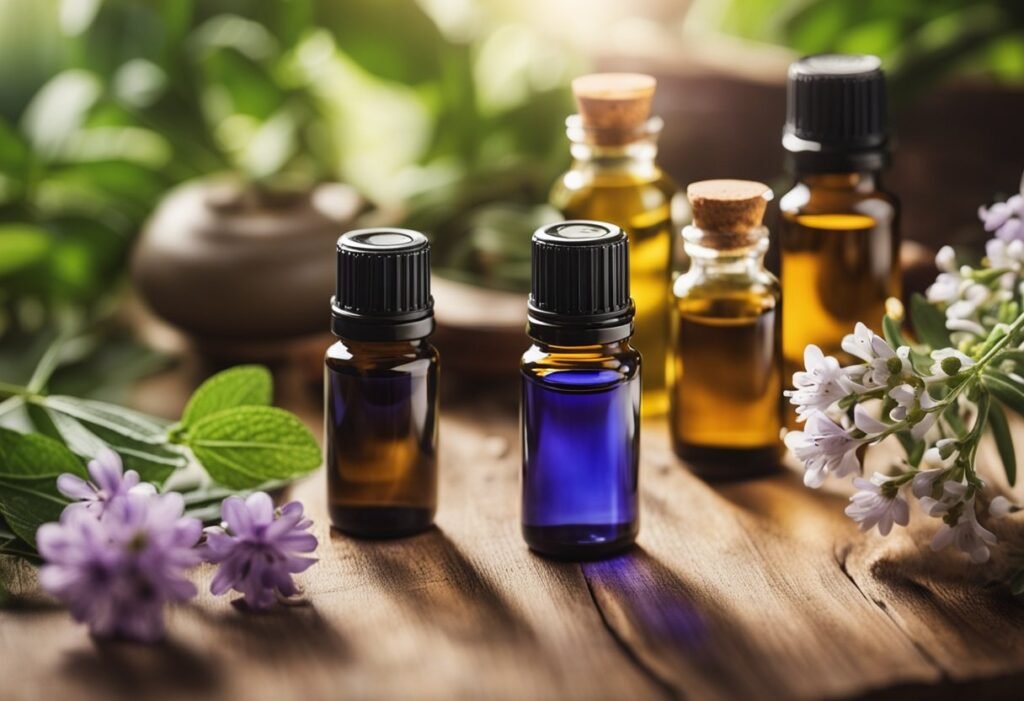
In conclusion, essential oils can be a useful tool in the fight against mold toxicity. While they are not a replacement for professional medical treatment, they can be a helpful addition to a well-rounded approach to mold remediation.
We recommend using essential oils in conjunction with other methods, such as proper ventilation, humidity control, and professional mold remediation services. Essential oils can be diffused throughout the home or used topically to help alleviate symptoms of mold toxicity, but it is important to use them safely and according to recommended guidelines.
There are many different essential oils that can be effective in combating mold toxicity, including tea tree oil, oregano oil, and cinnamon oil. It is important to choose high-quality oils and to use them in moderation, as some oils can be irritating or even toxic in large quantities.
Overall, essential oils can be a valuable tool in the fight against mold toxicity, but they should be used as part of a comprehensive approach to mold remediation. With proper use and precautions, essential oils can help to alleviate symptoms and improve overall health and well-being.
Frequently Asked Questions
What essential oils are effective for killing mold?
There are several essential oils that are effective for killing mold, including tea tree oil, cinnamon oil, clove oil, oregano oil, and thyme oil. These oils contain antifungal properties that can help eliminate mold spores and prevent them from growing.
How can essential oils be used to get rid of mold in the shower?
To use essential oils to get rid of mold in the shower, mix a few drops of your preferred oil with water in a spray bottle. Spray the mixture onto the affected areas and let it sit for a few minutes before wiping it away with a clean cloth. You can also add essential oils to your regular cleaning solution to help prevent mold growth.
What are some essential oils that can help with mycotoxin exposure?
Some essential oils that can help with mycotoxin exposure include lavender oil, lemon oil, and grapefruit oil. These oils contain detoxifying properties that can help remove toxins from the body and promote overall health.
Can peppermint oil be used to kill mold?
Peppermint oil has antifungal properties that can help kill mold, but it may not be as effective as other essential oils like tea tree oil or oregano oil. It can still be used as a natural alternative to chemical cleaners, but it may require more frequent applications.
What is the effectiveness of orange oil for killing mold?
Orange oil has antifungal properties that can help kill mold, but it may not be as effective as other essential oils like tea tree oil or cinnamon oil. It can still be used as a natural alternative to chemical cleaners, but it may require more frequent applications.
How can mold toxins be removed from the body?
Mold toxins can be removed from the body through a variety of methods, including dietary changes, supplements, and detoxification protocols. Some essential oils, like lavender oil and lemon oil, can also help remove toxins from the body. It is important to consult with a healthcare professional before starting any detoxification program.

